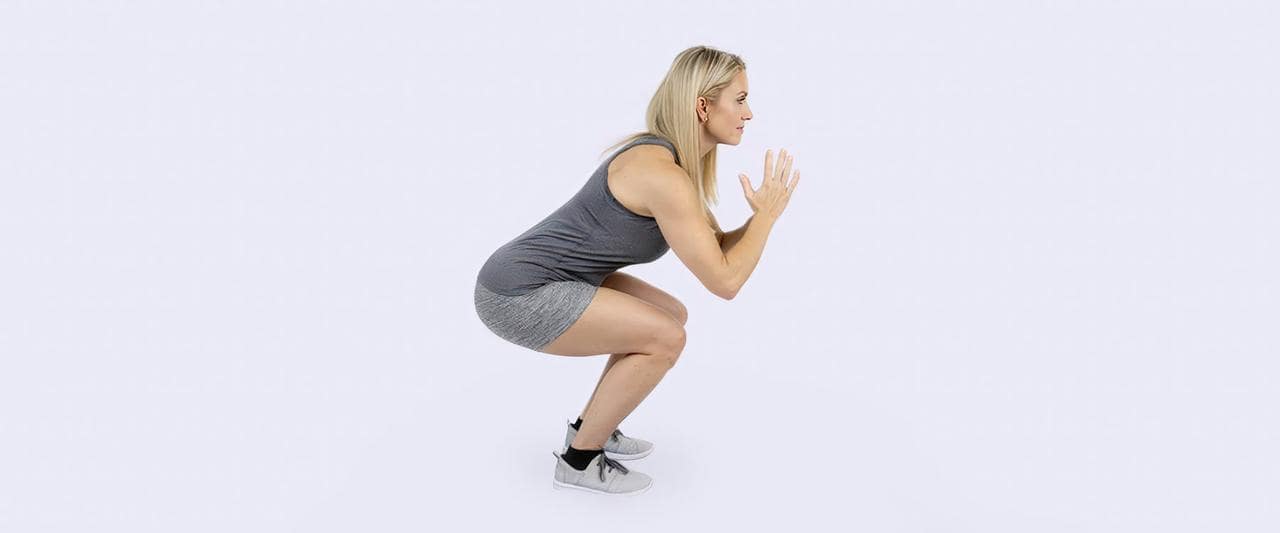Best Exercises for Lower Back Pain Relief
Core Exercises Strength Training Exercises Bodyweight Exercises Aerobic Exercise Exercises to Avoid Exercising Tips Getting Started
To be effective, exercises for lower back pain need to target multiple areas. Your back works simultaneously with your abdominal muscles and pain in this region is most commonly caused by weak core, back, and pelvic muscles. Building a strong core and pelvis will reduce the stress and strain on your lower back, thereby reducing low back pain. Try combining a mix of these exercises and work with your physical therapist to determine the most appropriate workout routine to suit your needs.
Core Exercises
Think of your core as the center of your body. Your body needs that strong center to stay in balance. If you have weak core muscles, your body will then rely on your ligaments, bones, and spinal discs to support your lower back muscles. Placing extra stress on these areas leads to low back and sciatica pain. Improving your core strength relieves the excess stress and pain from your lower back.
Core Exercises for Lower Back Pain
Strength Training Exercises
Weightlifting and strength training exercises relieve low back pain by building muscles in the back. With these exercises, the goal is not to become bulky but to develop lower back strength. However, strengthening the back isn’t enough, you need to work on your core and legs to improve overall strength to keep the pain away. Here are some lower back strength training exercises for you to try.
Press-Up Back Extensions
- Lie face down on a mat with your hands by your ears.
- Pressing through your hands, lift your chest and shoulders off the mat as far as you can without causing discomfort. Make sure your lower back and legs are relaxed.
- Repeat 10 to 20 times.
Chest-Supported Dumbbell Rows
- Lie face down on an incline bench. Take hold of a dumbbell in each hand, maintaining a neutral grip.
- Pull the dumbbells upward to the hip so that the arms form a 90-degree angle. Squeeze the shoulder blades for 1 to 2 seconds.
- Lower the dumbbells in a controlled motion.
- Repeat steps 2 and 3 for 8 repetitions. Do 3 sets.
Assisted Pull-Ups
- Set up a resistance band on a pull-up bar. Place one foot in the band and the other foot over the first foot for safety.
- Step onto the band and grab the bar, with your knuckles facing toward the ceiling. To begin the pull-up, engage the muscles in the upper middle back and shoulders.
- Lift yourself up until your chin is above the bar, then lower your body.
- Repeat up to 5 times.
Bodyweight Exercises
You can use your own body weight to strengthen and reduce lower back pain. These movements don’t require extra weights or machines and really work your core. By strengthening your core with simple, effective back exercises you’ll improve your posture and spinal alignment. This all together reduces lower back pain. Read on to learn more about the best bodyweight exercises we’ve found.
Wall Sits
- Stand against the wall, with your legs hip-width apart.
- Slide your back down the wall stopping when your thighs are parallel to the ground.
- Keep your hands relaxed at your sides and back firmly against the wall.
- Stay in the seated position for 10 seconds. Repeat 2 to 3 times. Gradually increase the time as you feel stronger.
Glute Bridges
- Lay on your back with your feet flat on the ground with your knees bent at a 45-degree angle.
- Tighten your core and bring your hips up to form a straight line between your knees and shoulders.
- Remain in the bridge position for 3 to 5 seconds then return your pelvis to the floor.
- Do 3 sets of 10 to 12 repetitions.
Squats
- Stand up straight, with your legs wide apart and feet facing forward. Place your hands out in front of you for balance.
- Sit back, as if sitting into a chair. Make sure your knees do not move out over your toes. Return to the starting position.
- Repeat 10 times. Do 1 to 3 sets of 10 repetitions.
You can make this exercise more challenging using weights or a kettlebell.
Lunges
- Stand up straight, with your legs slightly apart. Place your hands on your hips.
- Step forward with one foot.
- Drop your body straight down to the ground, then return to the starting position. The knee of your front leg should always stay behind your toes.
- Repeat 10 times. Then switch and do 10 repetitions on the other leg.
You can make this exercise more challenging using weights or a kettlebell.
Modified Push-Ups
- Position yourself on your hands and knees on a mat. Keeping your feet together, raise them up off the ground so that all your weight is on your hands and knees.
- Engage your stomach muscles and gently lower your upper body toward the floor by bending at the elbows. Lower yourself down as much as you can without resting on the mat.
- Push through your hands to lift your upper body again. Your spine should be neutral throughout this exercise, and your hands should be directly under your shoulders.
- Repeat 10 times. Do 1 to 3 sets of 10 repetitions.
Lying Lateral Leg Lifts
- Lie on your side on a mat. Place your top arm on your hip and your bottom arm under your head.
- Lift up the top leg. Keep your hip steady and avoid moving forward or backward.
- Lower your leg.
- Repeat 10 to 20 times before switching to the other leg.
To make this exercise more challenging, wear ankle weights .
Aerobic Exercise
Cardiovascular activities get your heart pumping, which is great news for your entire body. This ensures a steady flow of oxygen and nutrients to all the tissues in the body, including the back muscles and the spinal disks.
The following activities allow you to minimize pressure on your back while reaping all the benefits of cardio:
Swimming and Aqua Aerobics
Gentle swimming or other aquatic activities can ease pressure on the back, especially as water takes the stress off the joints. Swimming also improves core strength to provide more stability to the lower back. Once a week is enough to see results, but twice-weekly swim sessions are better.
Wondering which swimming stroke is best for back pain? The breaststroke and the backstroke place the least amount of strain on the back. Once your symptoms improve, you can progress to the butterfly or the freestyle stroke.
Walking
Walking is suitable for most people because it is easy, free, and can be tailored to each person’s ability. Regular walking strengthens the muscles of the lower body and improves spinal stability, flexibility, and posture.
It can also improve bone health, which reduces the risk of developing osteoporosis, a bone disease that can cause pain in the lower back and elsewhere. Finally, walking is a great way to lose weight, with excess weight contributing to back pain.
Elliptical or Step Machine
Elliptical machines and step machines are ideal for those with back or joint pain as they place minimal stress on the spine. You can also adjust the intensity of your workout to your individual ability, and increase the intensity as your back and core get stronger.
However, you must keep proper posture when using these machines to avoid putting too much pressure on your back. If you’re unsure about your posture and form when exercising, ask a physical therapist or personal trainer for advice.
Exercises to Avoid
Not all exercises are good for the lower back. Some increase your risk of muscle or joint damage, especially if you do not practice proper form. Before beginning a new exercise program, be sure to familiarize yourself with the exercises and stretches you should avoid if you have a bad back.
Stretches and Exercises to Avoid with Lower Back Pain
Other Exercising Tips for Lower Back Pain
- Schedule in a few days each week where you avoid strengthening exercises, as rest days allow the body to build muscle.
- Before getting started perform stretches for lower back pain that loosen your hamstrings, core, and glutes.
- Know your limits, and stop exercising if you experience sharp pain.
- Modify exercises to your abilities.
- Always warm up before exercise with some gentle stretches or use of a heating pad to loosen stiff muscles.
- Get the all clear from your doctor before beginning a new exercise program.
- Seek assistance from a personal trainer or physical therapist where necessary.
- If your back pain gets worse while exercising, take a break from exercise and see a doctor.
- Be sure to strengthen other areas of your body too, such as the core, which supports your back and helps to prevent injury.
Getting Started with Exercise for Lower Back Pain
Strengthening your lower back is a great way to reduce pain. Strong core muscles decrease the stress on your back, while bodyweight and aerobic exercise develop muscle to stabilize your midline. Start integrating these exercises into your workout to find the most benefit.







